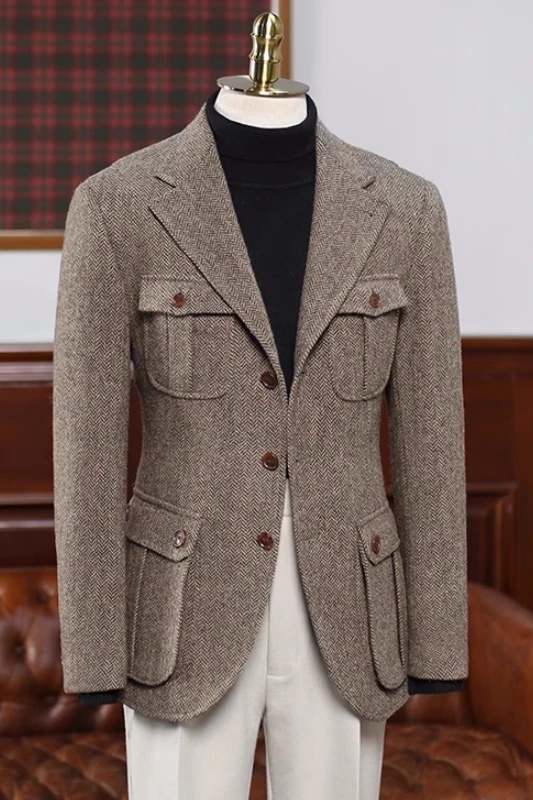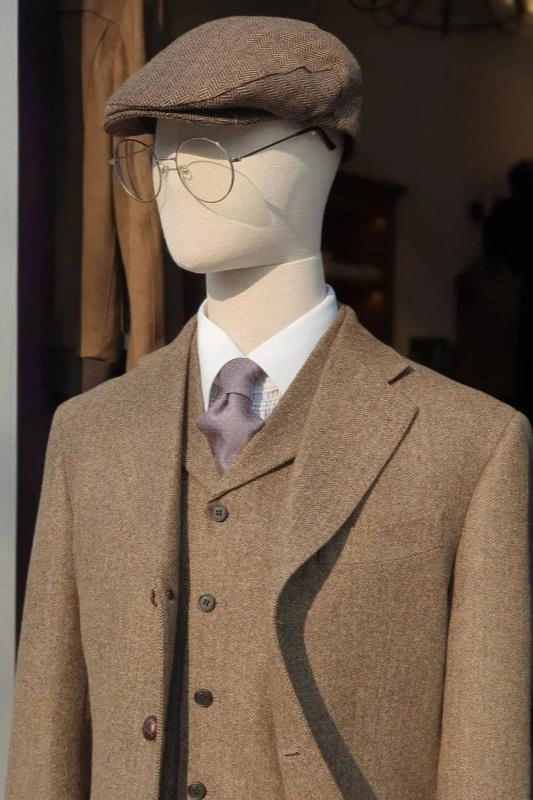
It is said that details determine success or failure. There are many ways to make an outfit stand out, but no matter how you layer and play with different styles, the key to avoiding a disorganized look always lies in the details.

Rather than worrying about how to layer, it is more straightforward to focus on the texture and quality of the fabric.
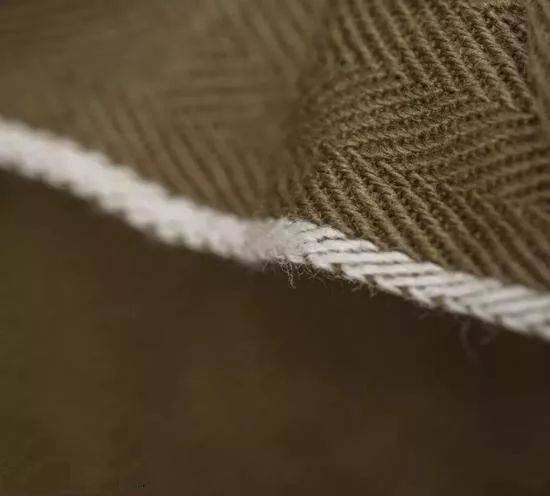
The "herringbone pattern" is a low-key yet sophisticated term in the world of suit fabrics. Its beauty is for those who understand it. From a distance, it may seem unremarkable, but once you get closer, you will appreciate the subtle details and taste it exudes.
The origin of the herringbone pattern
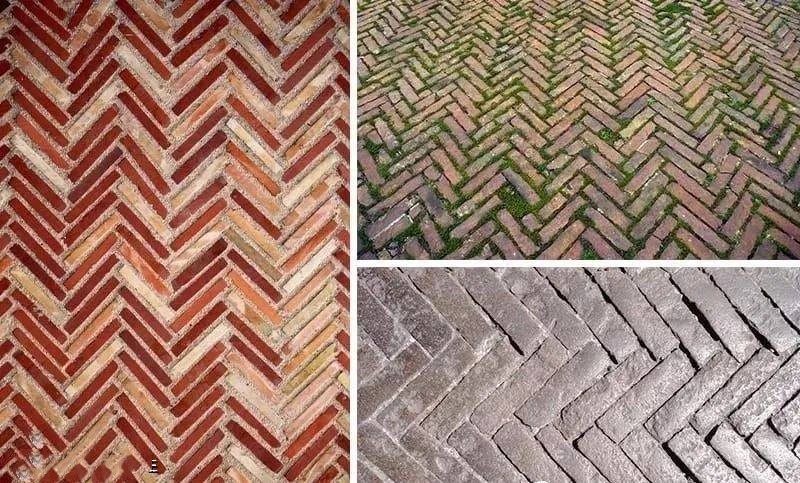
The herringbone pattern (Herringbone Pattern) can be traced back to the Roman Empire, where this interlocking structure was used to pave roads, effectively absorbing the pressure from traffic (horses, carriages, and pedestrians) on the ground, ensuring its durability and longevity.

The herringbone pattern can also be seen in ancient Egyptian jewelry designs, but it first appeared in fabrics in Italy. However, it was in Ireland that the herringbone pattern reached its peak in men's clothing.
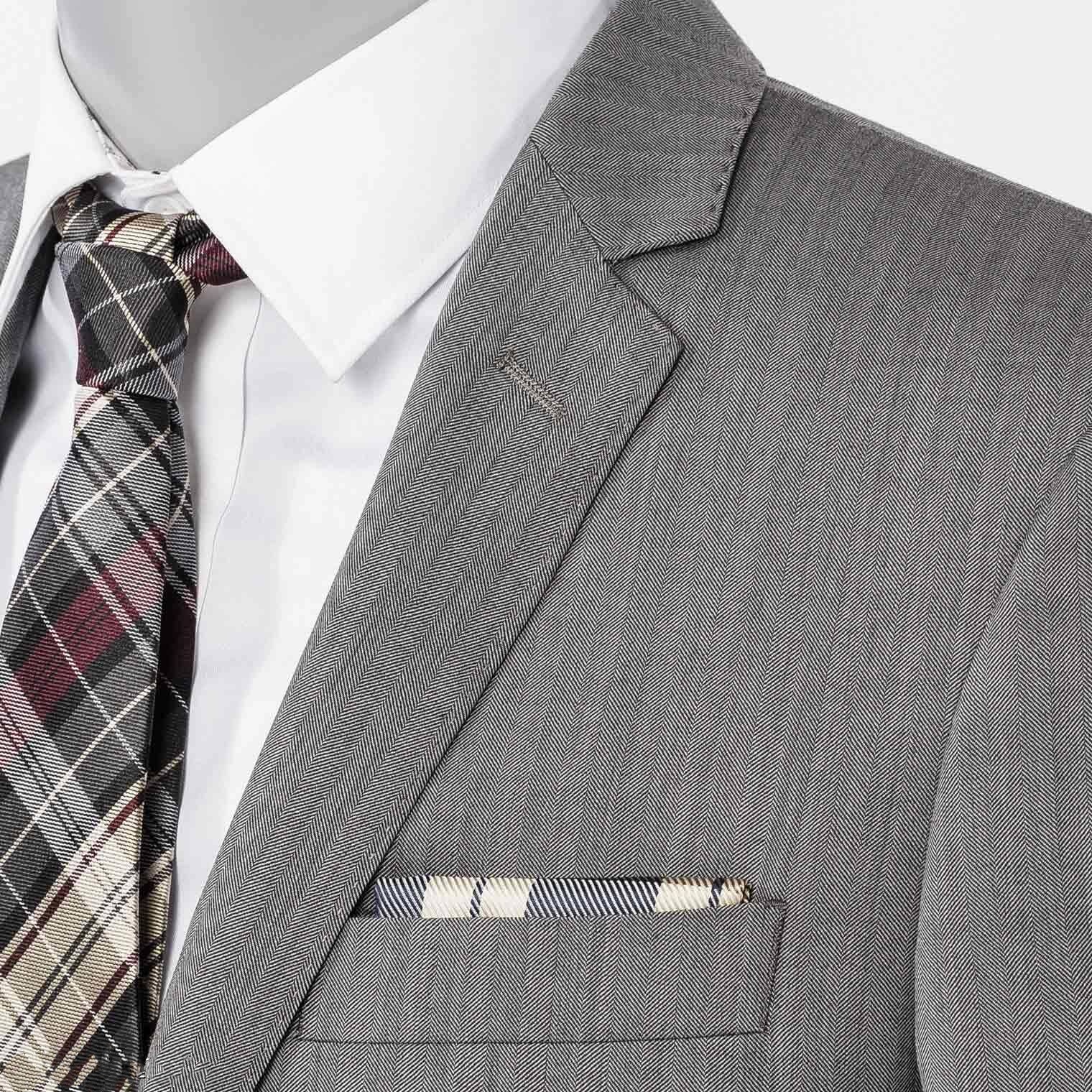
Probably due to its long history, the herringbone pattern is easily associated with classical styles. However, it is highly versatile. With the resurgence of retro trends in the present, the charm, stability and grace expressed by the herringbone pattern have once again gained popularity among the public.
Classic herringbone fabric
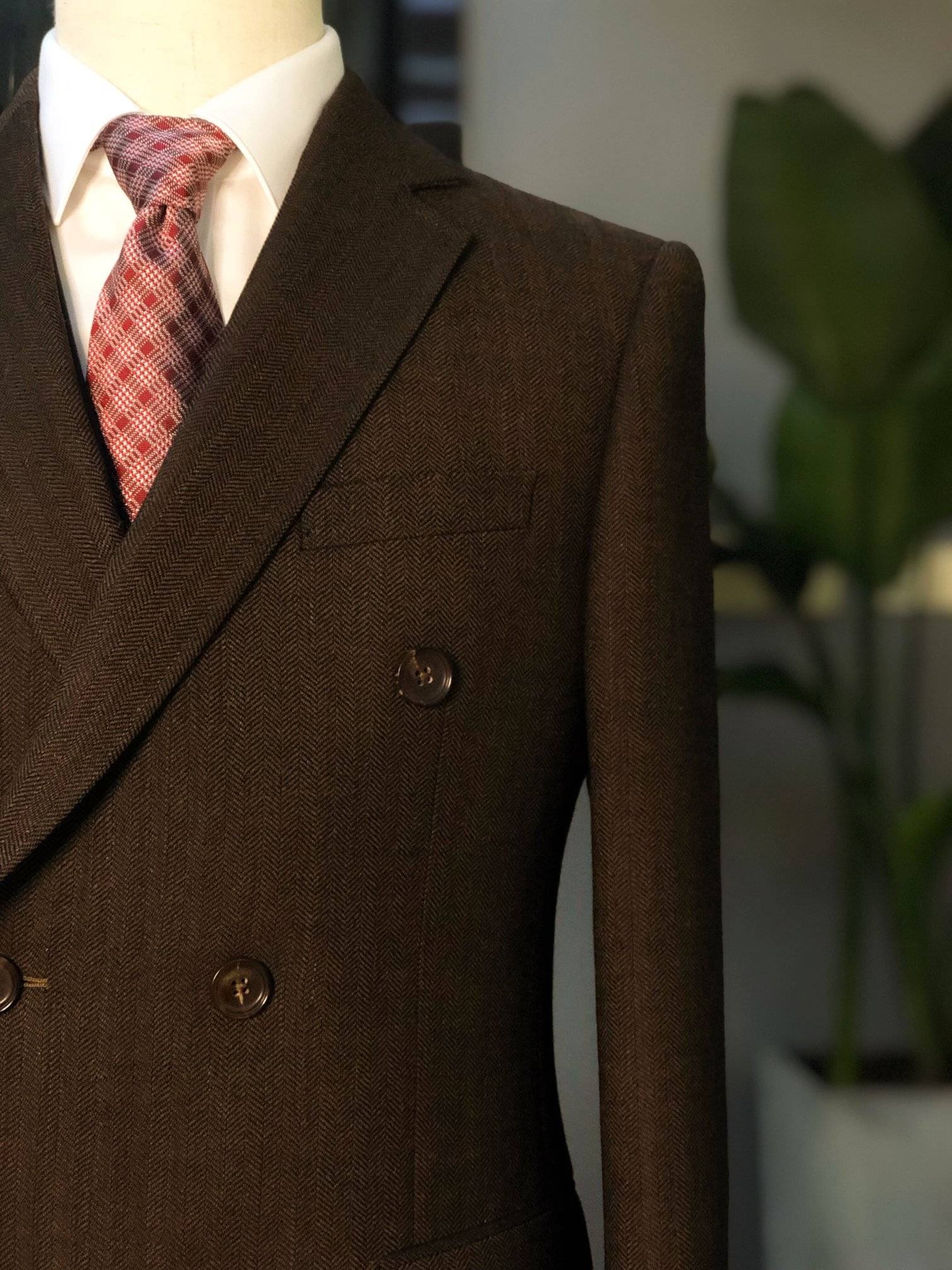
When it comes to suits, the most representative herringbone fabrics are tweed and Solaro.
Interestingly, although both are mostly made of wool, their different yarn thicknesses and weaving densities result in very different effects. Tweed is suitable for winter, while Solaro is ideal for summer.
Tweed originated in Scotland and Ireland. Initially, it was a hand-woven fabric used by farmers to protect themselves from the cold and wet climate. It has a loose structure, a rough and thick texture, and a slight prickly feel. While it may not be the most comfortable to wear, its durability has made it highly sought after.
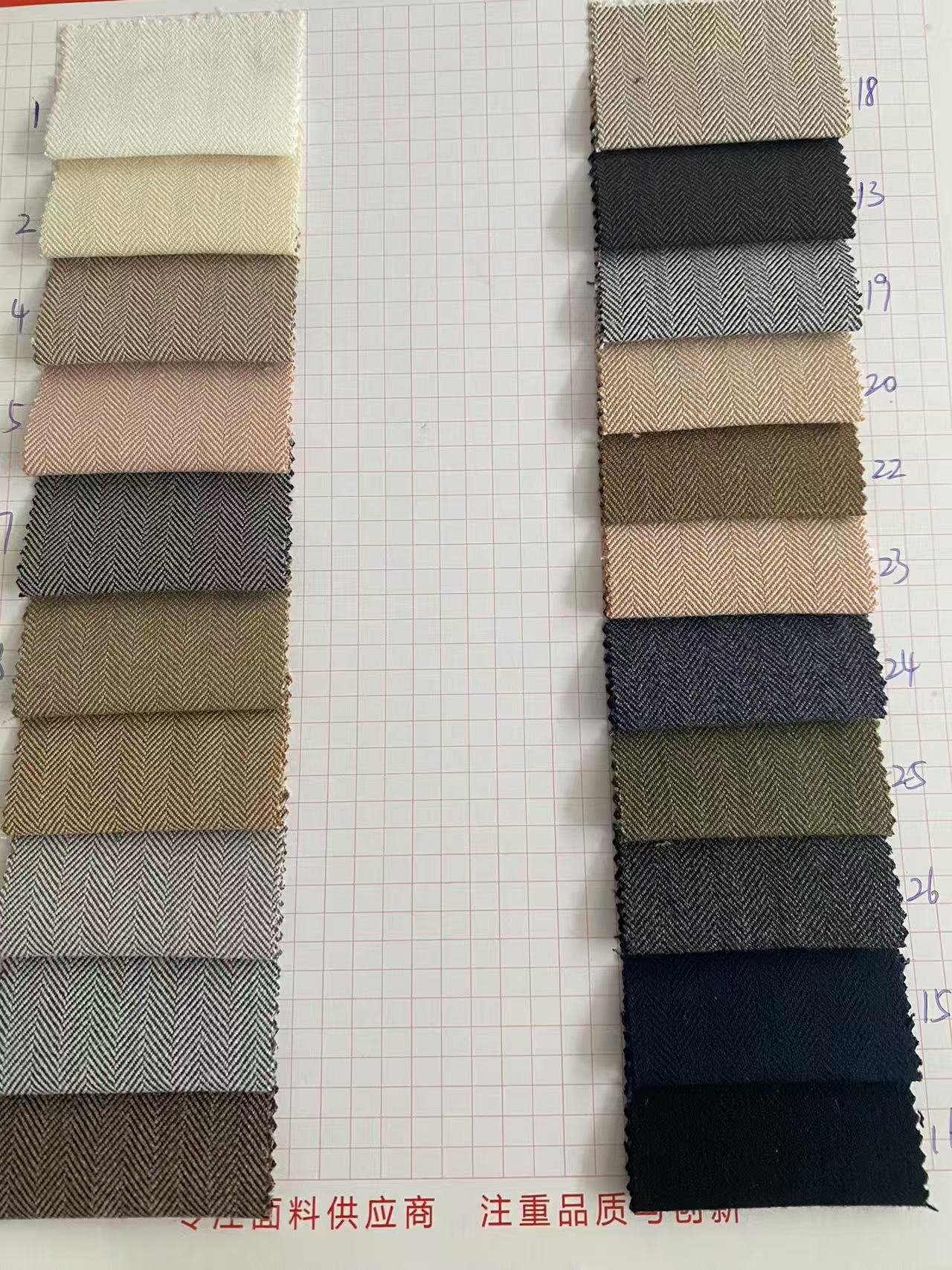
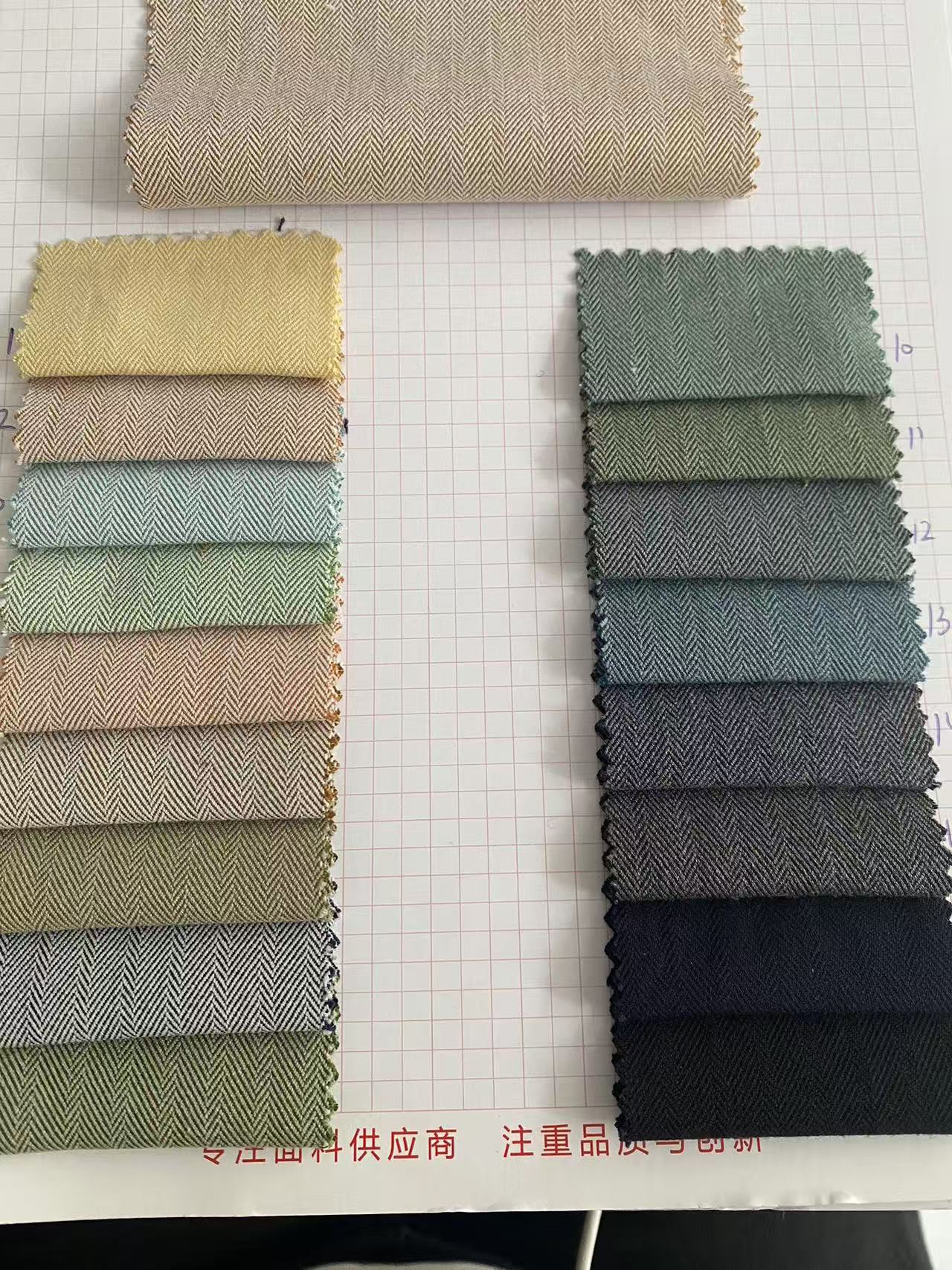
Solaro, on the other hand, uses a change in the angle of the warp and weft to create a pattern similar to dark stripes. Upon closer inspection, it is actually a fine herringbone pattern. Due to the use of finer yarns and a looser weave, the fabric has good drape and breathability, making it particularly suitable for summer wear.
Warm and comfortable, perfect for autumn and winter.

The tobacco brown with low saturation, like fallen leaves, is lazy and warm, showing the maturity and charm after the accumulation of time. The pure wool fabric is fine and soft, allowing the feeling of comfort to reach every inch of the skin.
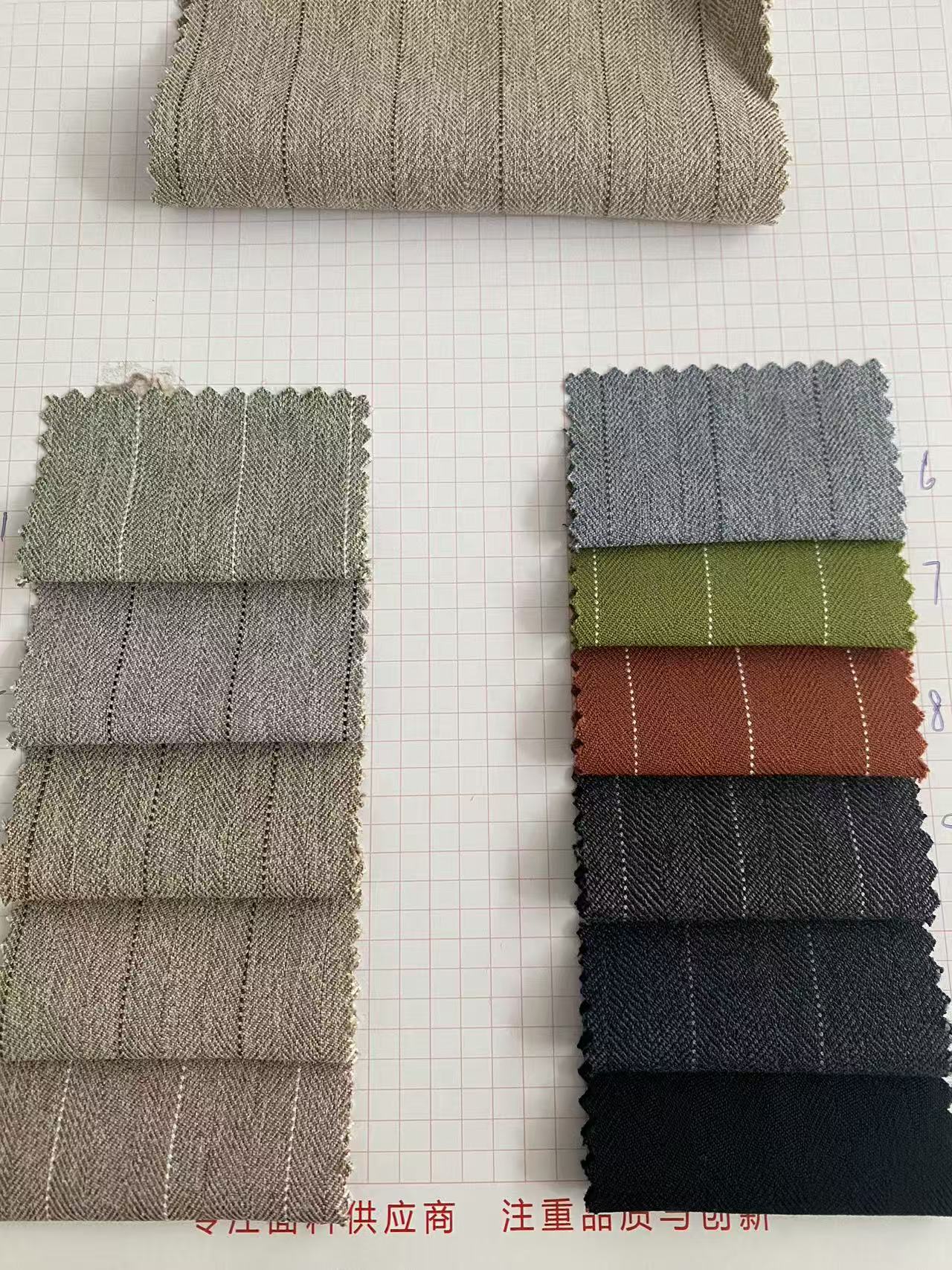
The sky blue that is fresh and elegant is like the color of the sky after a heavy rain, full of profound poetry. The exquisite blend of wool, cashmere and other fibers further enhances the comfort of wearing, creating a comfortable state of mind with a natural attitude.

The rich and intense brick red suit showcases an elegant and bright posture, effortlessly awakening the visual sense in autumn and winter. The texture and quality of the fabric endow the suit with vitality, bidding farewell to monotony and restraint.
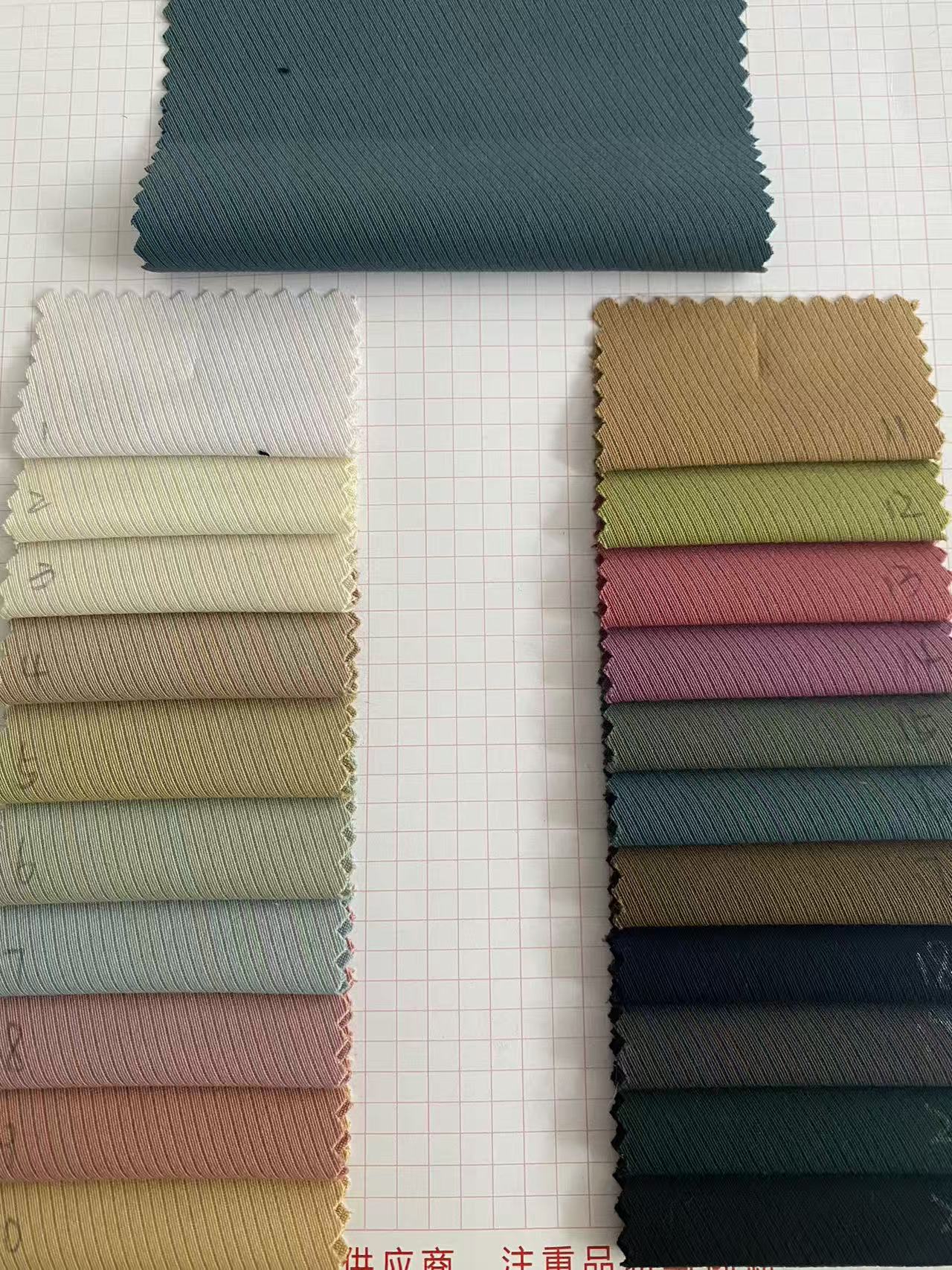
Refresh your daily look with subtle tonal contrasts. The blue single-breasted suit layered with different shades of purple is both clear and gentle.


